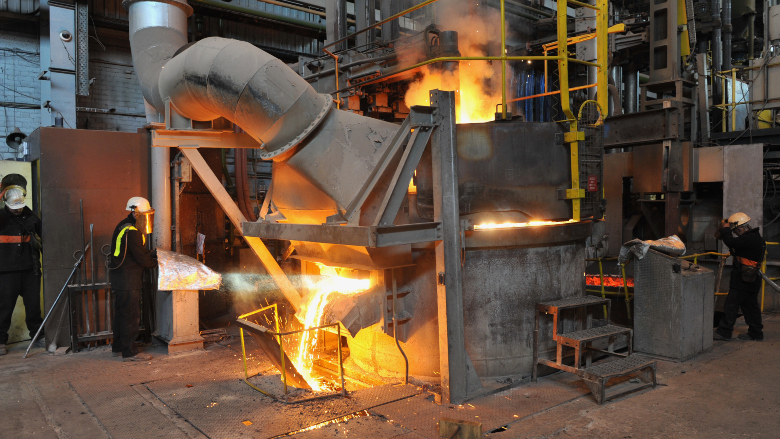The quest for low greenhouse-gas concrete construction is moving ahead on two more fronts in the U.K. as researchers scale up trials for producing emission-free Cambridge Electric Cement from steel recycling. At the same time, a highway scheme has demonstrated big CO2 reductions by viably combining alkali-activated cementitious material with basalt rebar.
Due to run until August 2024 with nearly $8 million in government funding, the Cambridge Electric Cement (CEC) trials led by the nonprofit Materials Processing Institute aim to perfect processes on a small scale before beginning industrial production at the electric arc furnace of CELSA Steel U.K. in Cardiff. The trial team includes representatives from a wide supply chain—from the design firm Atkins to materials producer Tarmac Group.
“By combining steel and cement recycling in a single process powered by renewable electricity, we could supplement the global supply of the basic construction materials to support the infrastructure of a zero-emissions world," says Julian Allwood, professor of engineering and the environment at Cambridge University and a member of CEC.
A Cambridge team devised the process that uses cement paste from recycled concrete to replace the lime flux used in scrap steel recycling. When cooled and ground, the CEC slag can replace the clinker in portland cement, eliminating its emissions. Produced by firing limestone and other minerals in a kiln, portland clinker is said to account for more than 50% of the cement sector's emissions.
In the U.K., the 12-million-ton-a-year steel scrap industry could provide 25% of national cement demand, according to the Materials Processing Institute.
Tarmac also supplied materials for a concrete trial running most of last year that replaces cement with alkal-activated cementitious material (AACM) and uses basalt for reinforcing steel instead of steel. The trial for the government's National Highways demonstrated more than 50% carbon savings to produce a slab as resilient as one made conventionally, according to Skanska U.K., which did the site work.
The trial at the M42 motorway investigated three slabs with different combinations AACM concrete and basalt rebar plus a conventional control sample. According to Tarmac, AACM produces up to 80% less CO2 than concrete with 100% portland cement.
Meanwhile, Basalt consumes 62% less CO2 than steel during manufacturing, is up to five times lighter than steel and is rust free, according to Malcolm Newton, director of the rebar supplier Basalt Technologies U.K. Ltd.
“By using a unique combination of materials, we are working to not only cut carbon, but also improve the structural performance of reinforced concrete," says Glennan Blackmore, Skanska’s highways director. The company and National Highways plan to extend the trial to a permanent structure, aiming to roll out the technology widely.
With cement production contributing 7% of global CO2 emissions, according to the U.K.-based Global Cement and Concrete Association, low-carbon concrete has become the industry’s holy grail. Association members representing 80% of global cement production outside China have vowed to prevent 5.5 billion tons of CO2 production by 2030, on the way to zero emissions 20 years later.




